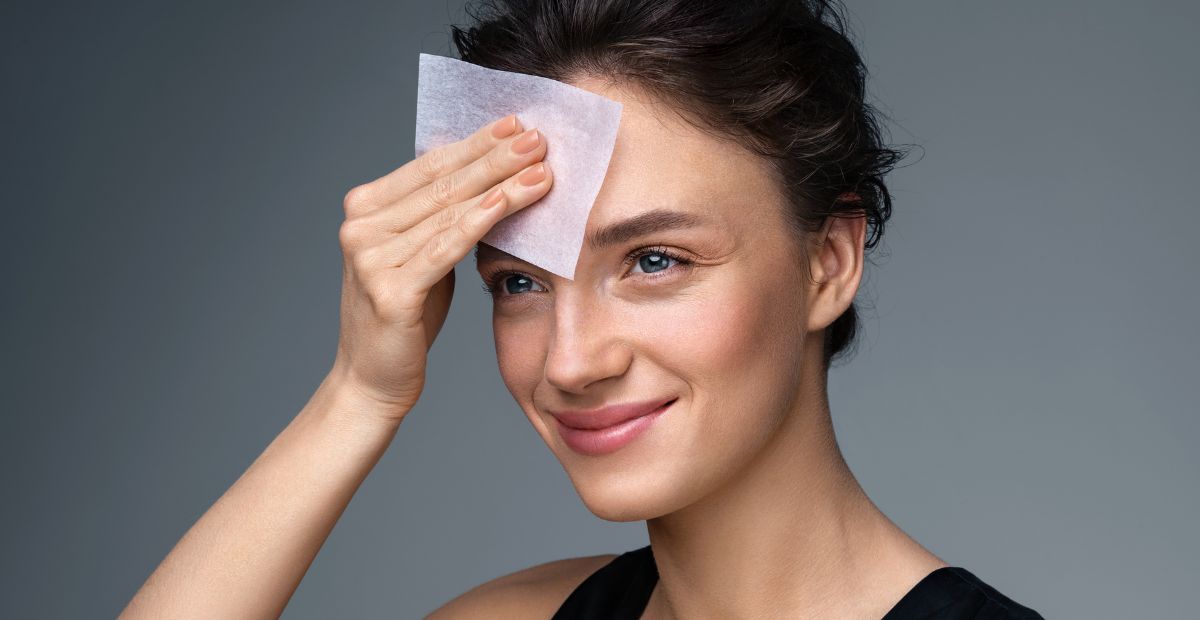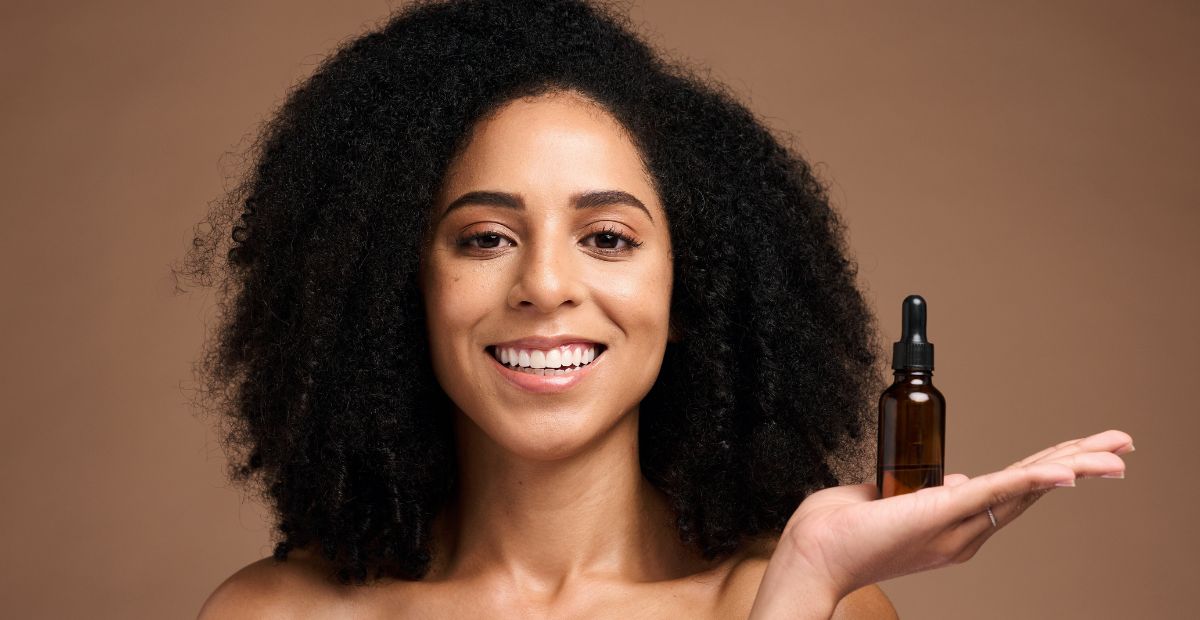5 Best Ingredients for Rosacea Skin Care: The Ultimate Guide
Onskin Content Team
Your guides through the skincare chaos

We’ve spoken quite a bit about rosacea and if you haven’t yet, be sure to check out our posts on the best strategies and main dos and don’ts of rosacea skin care. We recommend going in this order but feel free to read them in whatever order you like. In this post, we’ll talk about the best ingredients for rosacea skin care, and tell you a few hacks that might help you look your best for an important occasion.
Why Bother Figuring out Best Ingredients for Rosacea Skin Care
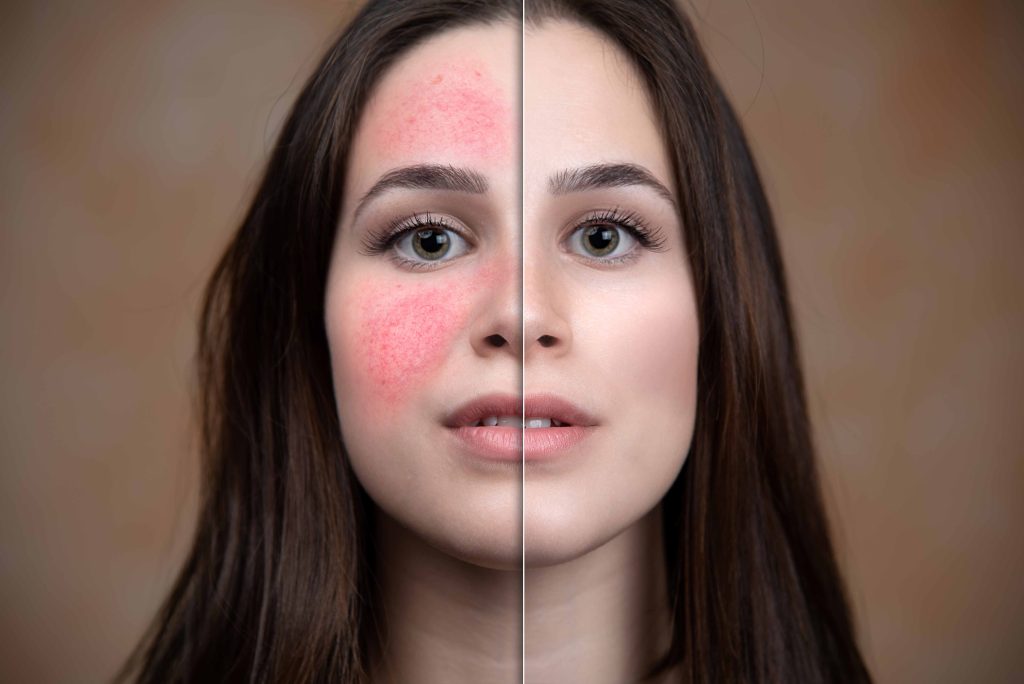
The section on ingredients is packed with information and might seem a bit daunting. If you’re somewhat reluctant to dive into it, think about it this way:
You’ll only have to learn about ingredients once but will score benefits from it indefinitely.
Would you say that even skin tone and healthier skin are worth your time?
If your answer is “Yes”, let’s dive in and talk miracle workers of rosacea skin care that’ll work for you, not against you, and let you enjoy your reflection again rather than obsess over the ineradicable blush.
Main Principles of Rosacea Skin Care
Rosacea is a tricky condition that sometimes confuses the heck even out of dermatologists. What causes it is poorly understood.
So what do we do? We focus on things that we know for sure! What we know is that skin with rosacea
- Has an impaired skin barrier,
- Is prone to irritation and water loss,
- Is prone to inflammation.

This means ingredients that address these problems should work wonders when it comes to rosacea skin care.
And guess what? They do! They’re just what skin with rosacea craves and will thank you for with an even complexion.
Best Ingredients for Rosacea Skin Care
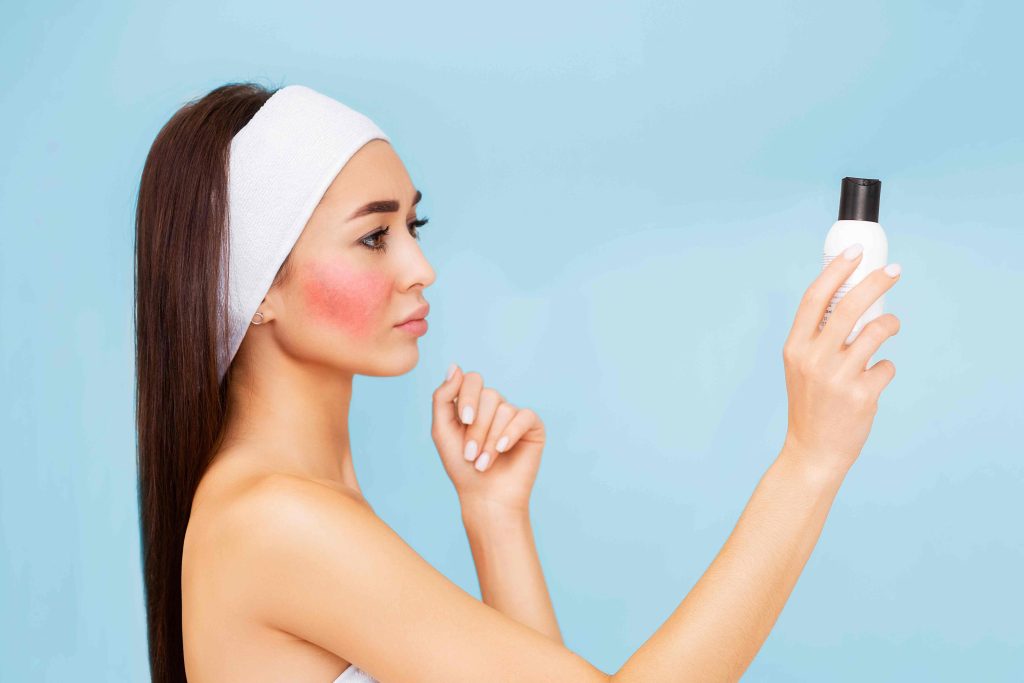
All the ingredients we’re going to talk about in this section help with the BIG THREE:
- Fortify the skin barrier
- Reduce water loss and create a barrier for irritants
- Reduce inflammation
If you have rosacea, give them a try and you might see a huge improvement!
Azelaic Acid
Azelaic acid is one of the very few FDA-approved ingredients for treating rosacea. In addition to doing the big three, it also has antioxidant and antimicrobial properties which help prevent flare-ups and the formation of pustules and papules.
To top it off, it’s safe for pregnant and breastfeeding women. You will need a prescription for 15-20% strength but recently 10% formulations have become available over the counter.
Colloidal Oatmeal
Colloidal oatmeal is simply finely ground oatmeal that’s been processed to create a powder so small, it easily mixes with water and forms a suspension. When used in skincare, it has some fantastic benefits hence it’s made it to the shortlist of the FDA-approved actives for rosacea.

A 2021 study found that it not only improves the skin barrier function but also the skin microbiome. Plus, it has potent UV-absorbant properties and the saponins in oatmeal work to dissolve dirt and oil and balance out the skin’s pH while avenanthramides reduce itching and calm inflamed skin.
Panthenol
Panthenol, a provitamin of B5, targets the big three problems of skin with rosacea. It functions as a hydrator, attracting and retaining moisture, reinforces the skin barrier, enhancing protection against irritants and allergens giving your skin a chance to calm down and heal. As a renowned healing accelerator, panthenol reduces inflammation which is exactly what rosacea skin craves.
Niacinamide
Niacinamide is a fantastic ingredient all around and you likely know this. It’s also very good for managing rosacea because, in addition to strengthening the skin’s barrier, it boosts the production of ceramides and collagen, which keep your skin hydrated and elastic.
By lowering the production of certain cytokines (the chemicals crucial for inflammation) and reinforcing the outer layer of the skin, niacinamide protects against common rosacea triggers like sunlight, wind, and temperature changes. This added resilience can lead to fewer flare-ups.
Licorice Root
Licochalcone A, a component of licorice, has been shown to improve facial redness and overall skin health, performing just as well as some traditional rosacea treatments like azelaic acid.
A study found that a gel containing just 2% licorice extract can significantly reduce symptoms like redness, swelling, and itching. What’s more, it helps with redness from shaving and UV exposure and is famous for its skin-brightening properties.
Worth a Try Ingredients of Rosacea Skin Care
Topical Sulfur
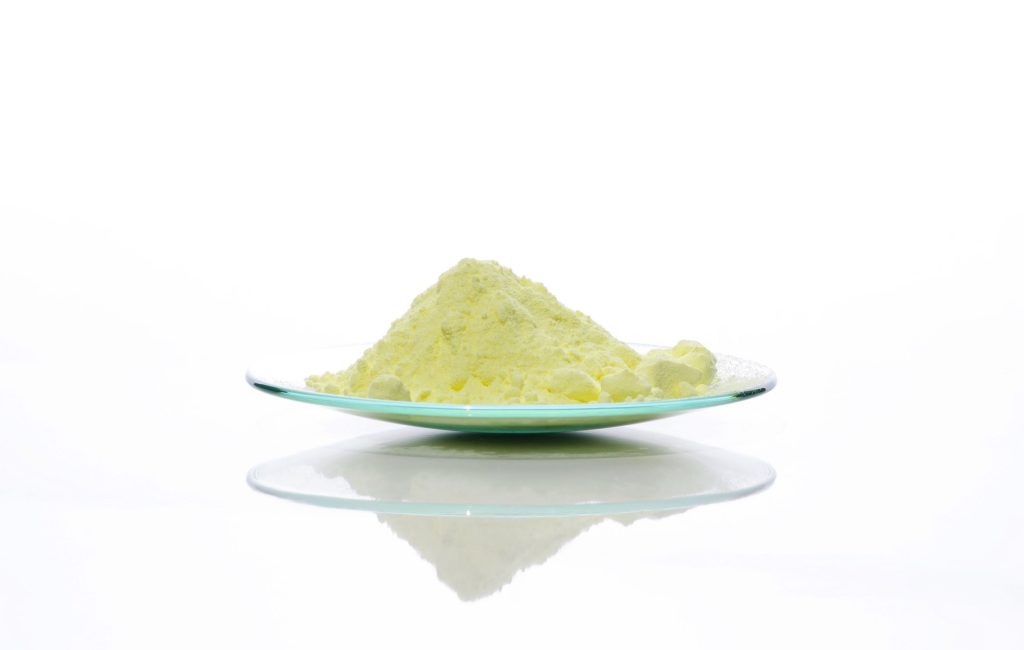
Over-the-counter sulfur products come in all forms—creams, cleansers, soaps, masks—you name it. Plus, they’re usually very budget-friendly.
A recent study shows that topical sulfur is just as effective as topical metronidazole at improving rosacea symptoms like redness, irritation, pustules, hypersensitivity, and flushing.
Here’s what sulfur can do for skin with rosacea:
- Reduce inflammation
- Promote skin cell turnover
- Combat Demodex mites while providing antibacterial benefits to help with pustules
However, not everyone tolerates sulfur well—it can sometimes cause dryness, flakiness, and irritation. Still, given the affordability and potential benefits, it’s worth a try!
Dimethicone
Dimethicone is a silicone-based ingredient you’ll find in lots of cosmetics. It works by forming a barrier on the skin that locks in moisture and keeps out irritants, which is really helpful for rosacea skin care. There’s also a theory that dimethicone might help cut down on Demodex mites, a common suspect in rosacea.
A recent study tested how long these mites can last in makeup and it turns out they don’t survive very long in products with dimethicone. A lot of people have noticed big improvements in their skin after using products with this ingredient, so it might be worth a try.
Redness Correction

Now, let’s talk about some shortcuts while you’re taking rosacea under control. After all, you can’t place your life on hold until it happens, right? So here are some things you can try to camouflage the redness.
Brimonidine Topical Gel & Eye Drops
Brimonidine is a medication that is super effective at constricting blood vessels. When you put it on your skin it will constrict those on the surface of your skin reducing redness and flushing. The effect shows in about 30 min after application and can last up to 12 hours!
For the best results, apply brimonidine an hour before your special occasion to the cleansed skin and let it absorb before putting on skincare and makeup. It also comes in eye drops which are available over the counter and will remove any redness and give your eyes a bright, glowing look.
Unfortunately, brimonidine gel is a prescription medication. But if you have rosacea, having a derm appointment is one the best things you can do, so just ask for one. You won’t regret having this ace up your sleeve!
Try Green-Tinted Makeup
If you haven’t heard of it before, green-tinted makeup may sound a bit quirky. It’s not going to make your face green but uses the power of the color wheel. Since green is opposite red on the wheel, it works to neutralize redness on your skin. Just a dab of green primer or concealer under your foundation can help camouflage any rosy patches, giving you a more even complexion.
Important Note: Don’t Miss out & Unlock the Power of Tech
Many people overlook digital tools and miss out big time. Modern life bombards us with stress and pollution and not taking advantage of tech means enduring the worst it has to offer without enjoying the best! It’s like attending a music festival wearing earplugs—you suffer through lines, drunk people, and bad weather without actually enjoying the music.
In skincare, tech assistance is right at your fingertips. For instance, you can skip squinting at labels if you install OnSkin, an ingredient scanner app that breaks down ingredient lists for you. It makes it much easier to find the right products and avoid buying the wrong ones.
Plus, OnSkin’s AI Skin Helper can provide insights when you’re unsure. While consulting a real dermatologist is ideal, the AI version is the next best thing, especially because derms usually refuse to join us for shopping at Sephora.
FAQ
-
Where do I start with OnSkin?
Download the app and think of a product you’d like to know more about. Then, go to the main screen and choose how you’d like to get the info —by manually looking it up in the search bar, by scanning its barcode, or by simply taking a picture of the packaging. Once you’ve done any of these, you can see how safe the product is and if it suits your skin or hair (if this analysis is available).
-
What is Safety Rating, and how is it calculated?
In OnSkin, we base product rates on ingredients. Each is closely studied by our medical team and then evaluated. This way, each product gets a score from 0 to 100, with 100 as the safest level.
Safety Levels
- Excellent (76–100)
- Good (51–75)
- Not great (26–50)
- Bad (0–25)
These scores are backed by the latest scientific studies. You can find links to the resources we’ve used on each ingredient page. To assess the safety of product ingredients, we evaluate them according to the following parameters/criteria
- Endocrine disruption risk / Reproductive toxicity
Indicates the probability of mimicking, blocking, or interfering with the body hormones.
- Сarcinogenicity
Measures the potential risk of inducing cancer.
- Allergy risk
Estimates the probability of an allergic reaction.
- High concentration alert
Determines the risk of being unsafe in certain amounts.
-
What is Skin Match?
Based on the info you input about your skin type, age, skin care goal, and other “settings,” OnSkin checks how well a product is tailored to your unique skin needs — it’s basically like a dermatologist helping you find the right products, minus the fees and the long wait. The product you’re checking might be labeled as It’s a match!, Hit-or-miss, or Not a match for you. The app also detects ingredient groups such as Anti-acne, Anti-inflammatory, Moisturizes, May be drying, Comedogenic, and others — by tapping one, you see exactly what ingredients from this or that group are in the product.
-
I seem to have a problem with using the app. Who should I contact?
Please reach out to us at [email protected], and we’ll carefully look into your issue. Your ideas for improving the app are also very welcome!
-
Do you have an Android version?
Not yet! Hey Android users, we hear you, and we're thinking about making an Android version, but we haven't started the development yet.
Tracker Sent!
It’s on the way to your inbox.



